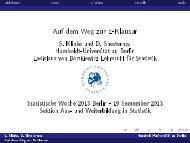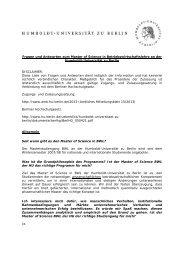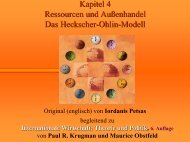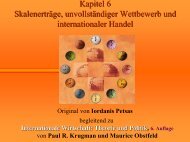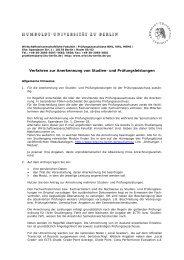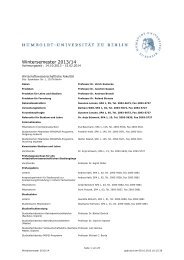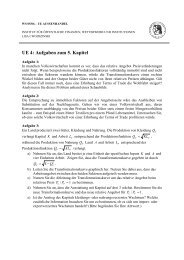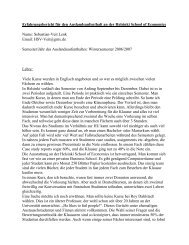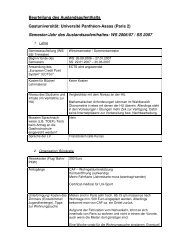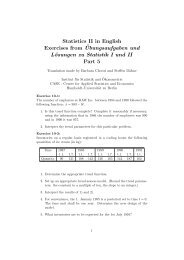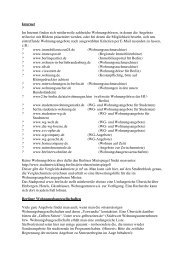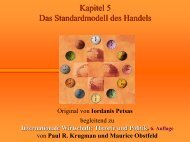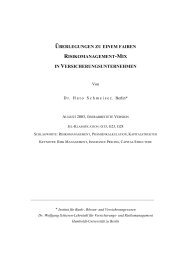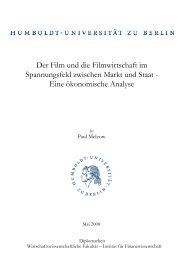Master Thesis - Humboldt-Universität zu Berlin
Master Thesis - Humboldt-Universität zu Berlin
Master Thesis - Humboldt-Universität zu Berlin
You also want an ePaper? Increase the reach of your titles
YUMPU automatically turns print PDFs into web optimized ePapers that Google loves.
6.7 Capital tax shock<br />
Responses of real variables to a capital tax shock are less persistent for most<br />
variables. After a short decline, labor, return on capital, output, investment<br />
and capital value return to the steady state. Consumption and real<br />
wage reach a higher level after stabilization that suggests an increase of consumption<br />
via a labor income channel. Given Calvo mechanism, inflation is<br />
also more persistent and sustained by higher sustained costs of labor that<br />
increases the marginal cost.<br />
6.8 Labor tax shock<br />
This shock produces a sharp decrease in the level of labor supply and employment<br />
as it rises the costs afferent to the labor utilization. A fall in the<br />
level of employment increases real wage and medium term return on capital<br />
level, but decreases the real output, consumption, and investment.<br />
6.9 ROW demand shock<br />
In our setup, a shock in ROW demand implies a depreciation of the exchange<br />
rate and consequently an increase in the current account. Exports diminish<br />
relative to imports and the demand for domestic goods follow a slight decline.<br />
The effect of the shock on nominal variables depends on the share of ROW<br />
in the total imports and the degree of stickiness in the import prices.<br />
6.10 Oil price shock<br />
A shock in the oil price is highly persistent as we could notice from its<br />
ARMA(1,1) representation. This increase falls directly in the production<br />
cost, without any rigidity and produces a sharp decrease of output, together<br />
with investment and consumption. On one hand, the monetary authority responds<br />
with a one-time increase of the interest rate. On the other hand, the<br />
depreciation of the terms of trade produces losses in wealth. The impact of<br />
net current account is positive because of higher costs of imports. The negative<br />
effect on trade balance can be explained as a loss in the competitiveness<br />
of the domestic firms.<br />
39



